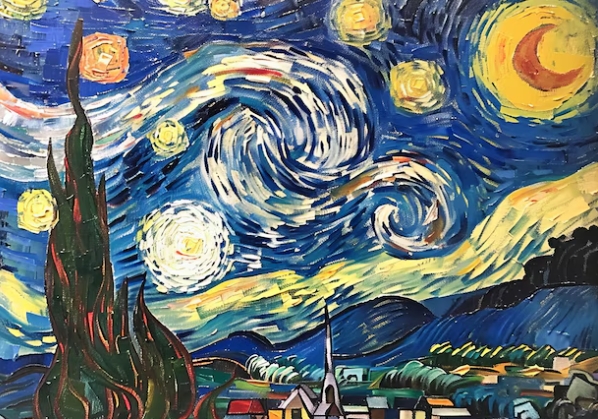Vincent van Gogh’s ‘Starry Night’ is a masterpiece that continues to captivate art lovers around the world. Let’s explore the majesty of this iconic painting:
A Glimpse into Van Gogh’s Mind:
Van Gogh created ‘Starry Night’ in 1889 while he was staying at the Saint-Paul-de-Mausole asylum in France. The painting reflects his turbulent emotions and struggles with mental illness.
The Night Sky Comes Alive:
The swirling, dramatic sky in ‘Starry Night’ is what truly sets this painting apart. Van Gogh’s use of bold, expressive brushstrokes captures the movement and energy of the night sky.
Vibrant Colors and Contrasts:
Van Gogh’s use of vibrant colors like blues, yellows, and greens creates a sense of vibrancy and depth. The contrast between the dark silhouettes of the village and the bright stars above adds to the painting’s dynamic composition.
Symbolism and Meaning:
‘Starry Night’ is rich in symbolism, with the bright stars and crescent moon representing hope and the dark cypress tree symbolizing death. The swirling sky evokes a sense of turbulence and inner turmoil.
A Timeless Masterpiece:
Despite being painted over a century ago, ‘Starry Night’ remains a timeless masterpiece that continues to inspire and intrigue viewers. Its dreamlike quality and emotional depth make it one of van Gogh’s most celebrated works.
In conclusion, exploring the majesty of van Gogh’s ‘Starry Night’ is an unforgettable experience that reveals the artist’s unique vision and emotional depth. This iconic painting continues to captivate audiences with its vibrant colors, swirling sky, and rich symbolism.


